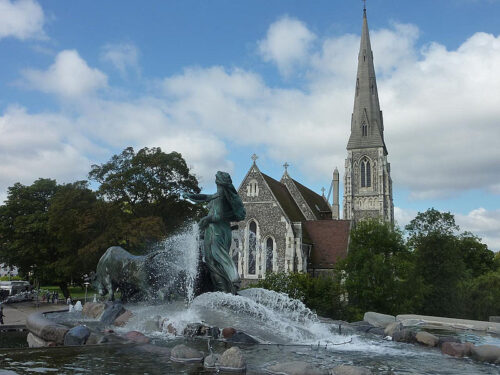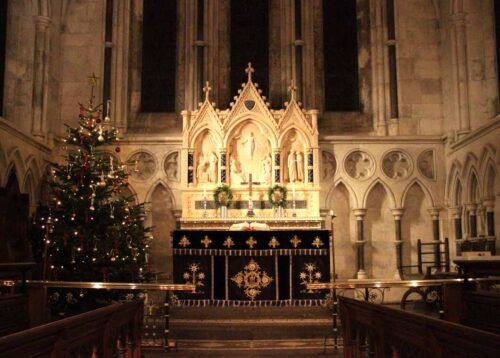Kastellet
The Kastellet meaning the citadel in Danish is one you should pay a visit to and ideally combine it with a visit to the famous Little Mermaid sculpture. A little more than 1 km to the west of the Statens Museum for Kunst lies the star-shaped citadel of Copenhagen. Kastellet (The Citadel) in Copenhagen is one of the best-preserved star fortresses in Northern Europe. The Citadel was constructed in 1624 by Danish King Christian IV as a part of the defense of the City of Copenhagen.
The Citadel is constructed in the form of a pentagram with bastions at its corners and was continuous with the ring of bastioned ramparts which used to encircle Copenhagen. Several buildings are located within the ring of the grounds of The Citadel, including a church and a windmill.
Although the buildings still house various military activities, today it is also a peaceful and protected public park area and an important cultural and historical site. It is a lovely place to go for a walk on a sunny day or a run and see the Copenhagen skyline and harbor from a different view – peaceful yet close to the busy center of the city.
The site includes two small museums with limited opening hours. The Garrison’s Historical Collections are on display in one of the guard buildings inside the North Gate. The Livjæger Museum is open only on Sundays from May 1st to October 1st, 11 am – 3 pm. A prison complex was built on the rear side of the church in 1725.
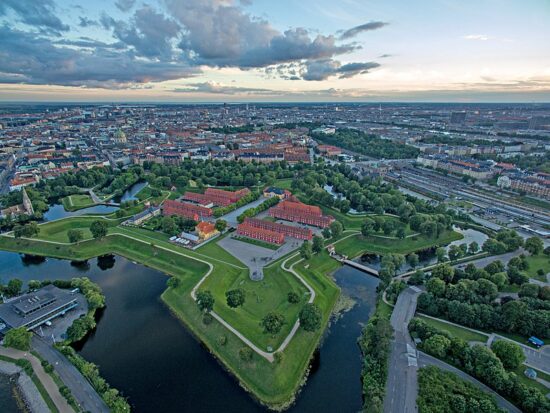
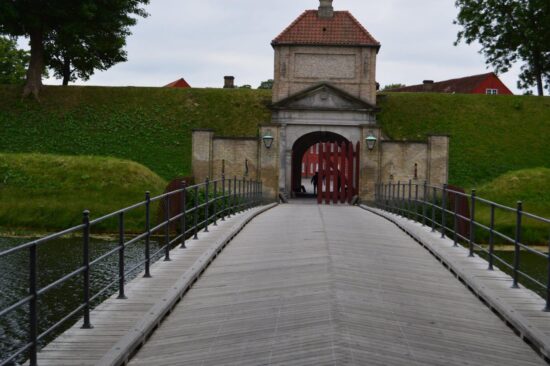
Eye holes in the wall between the church and the prison cells made it possible for the prisoners to follow the church services. Several prominent personalities have served time in prison for conflict with the law or the King. For example, Struense awaited his execution in Kastellet’s prison after his affair with Queen Caroline Mathilde and his increasing political power.
Christian Købke (1810–1848), a Danish painter associated with the Golden Age of Danish Painting, grew up in Kastellet and made many paintings of the area, some of which today can be seen at Statens Museum for Kunst (The National Gallery of Denmark). The Citadel is still an active military area that belongs to the Danish Defence Ministry. Military activity in the area includes use by the Chief of Staff, the Danish Home Guard, Military Intelligence, and the Royal Garrison Library.
Despite the continuous military presence in the area, the Citadel is today a peaceful, protected area, serving as a public park as well as a cultural-historical monument. It is located close to the Langelinie promenade and park, the famous statue of the Little Mermaid, the English Church of St. Alban’s, and the stunning Gefion Fountain. It is a popular place to go for a walk on a sunny day and is very popular with children on account of the many animals and birds on the grounds.
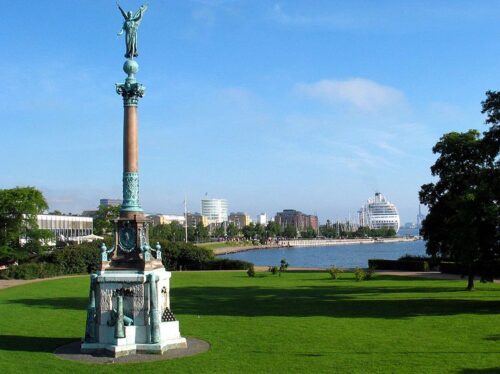

St. Alban’s Church was built close to the heart of Copenhagen in 1885 and was consecrated in 1887, just a stone’s throw from the royal palace and the little mermaid. However, before this, there had been an Anglican presence in Denmark for many years and were one of the first foreign denominations to be granted royal approval to hold services that previously had been restricted to den Danske folkekirke (the Danish Church).
The Church was named after Saint Alban, the first martyr of England, murdered on the 22nd of June in the year 303 A.D. and buried in Ely in Cambridgeshire in eastern England. Canute of Denmark (Knud den Hellige), son of Svend Estridsøn and nephew of Canute the Great, King of England, 1075 moved the remains of Saint Alban to the Church of St Mary at Odense, Denmark, a small wooden church which was consequently renamed Church of Saint Mary and Saint Alban.
In the year 1086, Canute of Denmark, or as he was now called, Canute the Fourth of Denmark, together with his brother Benedict, was murdered in front of the altar of this church and was sainted in 1101. Today the remains of Canute the Fourth and his brother Benedict, as well as those of Saint Alban, are kept in the present Church of Saint Canute (Sankt Knud) in Odense. The original church of Saint Mary no longer exists. [Funnily enough, the local brewery, Albani in Odense, was named after Saint Alban. More
